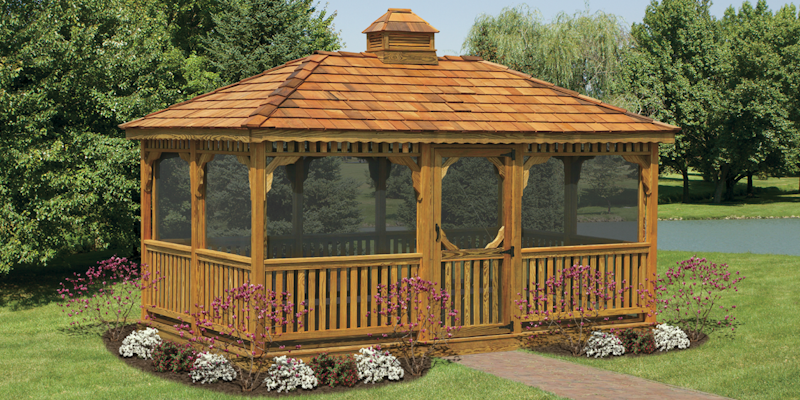
Creating a gazebo in your outdoor space is not just a construction project; it’s an opportunity to craft a charming retreat that enhances the beauty and functionality of your home. In this comprehensive guide, we’ll walk you through the step-by-step process of building a gazebo, from planning and preparation to the finishing touches. Additionally, we’ll explore 10 diverse styles of gazebos to inspire your project and answer five frequently asked questions to ensure a smooth construction experience.
Step 1: Planning Your Gazebo Project
Define Your Purpose:
Before picking up any tools, determine the primary purpose of your gazebo. Whether it’s a cozy reading nook, an outdoor dining area, or a space for entertaining guests, understanding your gazebo’s intended use will guide its design and layout.
Choose a Suitable Location:
Consider the landscape of your outdoor space and select a location that complements the overall design of your property. Ensure the ground is level to avoid complications during construction.
Decide on Gazebo Size:
The size of your gazebo should align with its intended purpose and the available space. Take measurements to determine the dimensions, ensuring that the gazebo is proportionate to the surrounding environment.
Select Gazebo Style:
Explore different gazebo styles to find one that resonates with your taste and complements the architecture of your home. This guide will provide 10 distinct styles for inspiration.
Gather Materials and Tools:
Based on your chosen style and design, compile a list of materials and tools required for the construction. Common materials include wood, metal, and vinyl, while essential tools include a saw, drill, level, and hammer.
Step 2: Building the Foundation
Marking the Layout:
Use stakes and string to mark the perimeter of the gazebo on the ground. This will serve as a guide during the excavation and foundation-laying phase.
Excavation:
Dig post holes according to the layout markings. The depth of the holes will depend on the local building codes and the type of foundation you choose.
Pouring Concrete Footings:
Mix and pour concrete into the post holes to create a solid foundation. Insert post anchors into the wet concrete for attaching the gazebo posts.
Step 3: Building the Frame
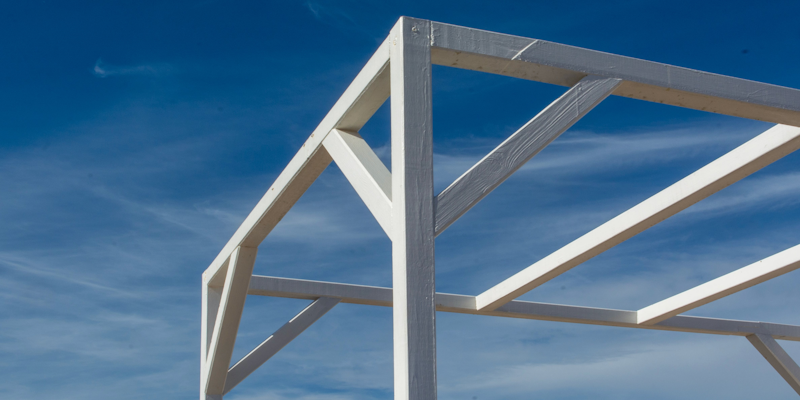
Assembling the Posts:
Attach the gazebo posts to the post anchors using screws or bolts. Ensure that the posts are plumb and secure before moving on to the next step.
Adding Crossbeams:
Connect the posts with crossbeams to form the basic frame of the gazebo. This step establishes the shape and structure of the gazebo.
Installing Floor Joists:
Lay out and attach floor joists across the crossbeams. This creates the base for the gazebo floor, providing stability and support.
Step 4: Adding Flooring and Roofing
Installing Flooring:
Select and install the flooring material of your choice. Popular options include wood decking, pavers, or even a concrete floor. Ensure the flooring is level and secure.
Adding Roof Supports:
Attach additional vertical posts or braces to support the gazebo roof. The style of your gazebo will influence the design of these roof supports.
Attaching the Roof:
Install the roof structure according to your chosen style. This could involve constructing a simple slatted roof, attaching a fabric canopy, or installing a more complex shingled roof.
Step 5: Finishing Touches
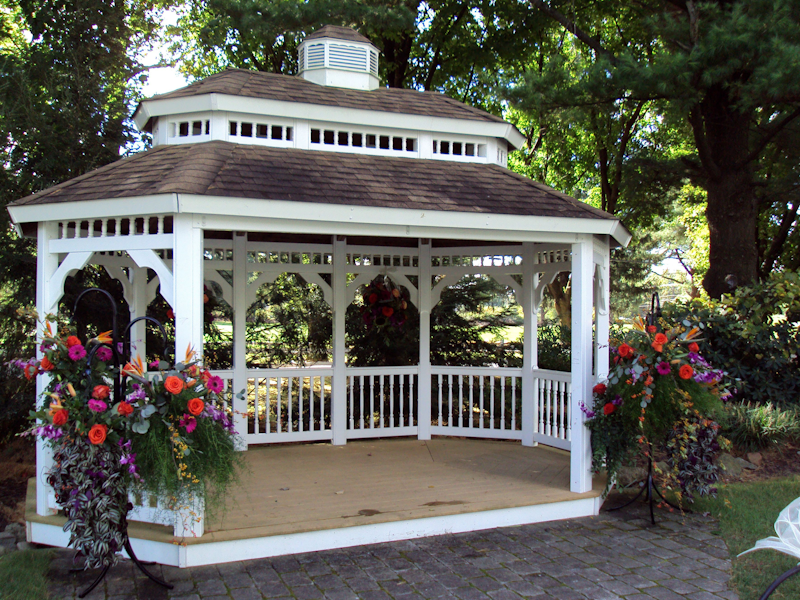
Adding Railings:
If your gazebo design includes railings, attach them securely to the posts. Railings provide both safety and aesthetic appeal.
Painting or Staining:
Apply a coat of paint or stain to protect the wood and enhance the gazebo’s visual appeal. Choose a finish that complements the overall style of your outdoor space.
Accessorizing:
Personalize your gazebo with accessories such as outdoor furniture, cushions, lighting, and potted plants. These additions will transform your gazebo into a comfortable and inviting space.
7 Unique Design Ideas
Building a gazebo offers a remarkable opportunity to shape an inviting retreat in your outdoor space. Let’s explore seven distinct gazebo ideas, each with its own character and charm, providing you with inspiration for your gazebo construction project.
1. Classic Octagonal Elegance
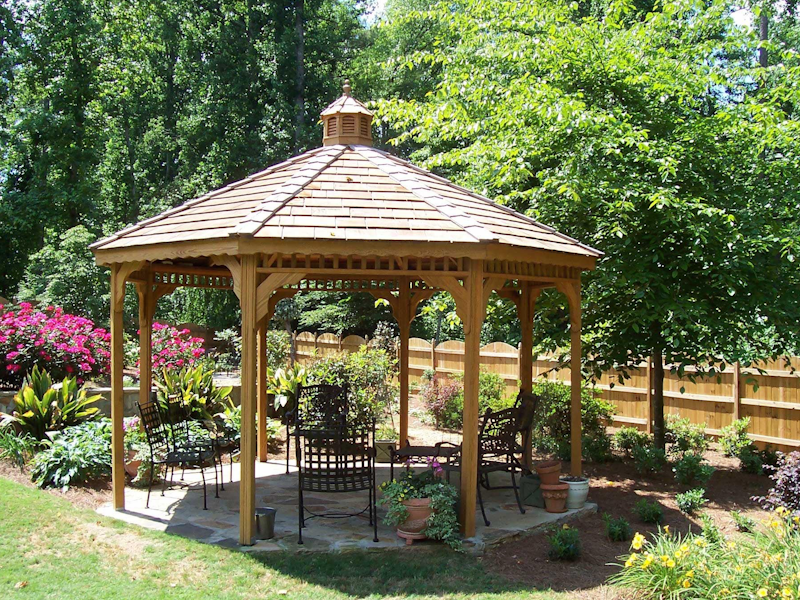
Design Elements: Embrace timeless sophistication with a classic octagonal gazebo. This design features intricate railings, creating an open and airy feel. The pointed roof adds an architectural focal point, making it a perfect choice for those who appreciate traditional aesthetics. Consider staining the wood in a rich, warm tone to enhance its classic appeal.
2. Contemporary Pavilion Retreat
Design Elements: Opt for a sleek and modern look with a contemporary pavilion-style gazebo. This design boasts clean lines, open sides, and a flat or slightly sloped roof. It’s an ideal choice for those who prefer a minimalist aesthetic that seamlessly integrates with modern outdoor spaces. Choose neutral colors for a clean, understated finish.
3. Victorian-Inspired Grandeur
Design Elements: Transport your outdoor space to a bygone era with a Victorian-inspired gazebo. Ornate detailing, decorative spindles, and a multi-tiered roof create a sense of vintage grandeur. This design is perfect for homeowners seeking a gazebo that exudes elegance and timeless charm. Consider painting the gazebo in a soft pastel color for a touch of Victorian romance.
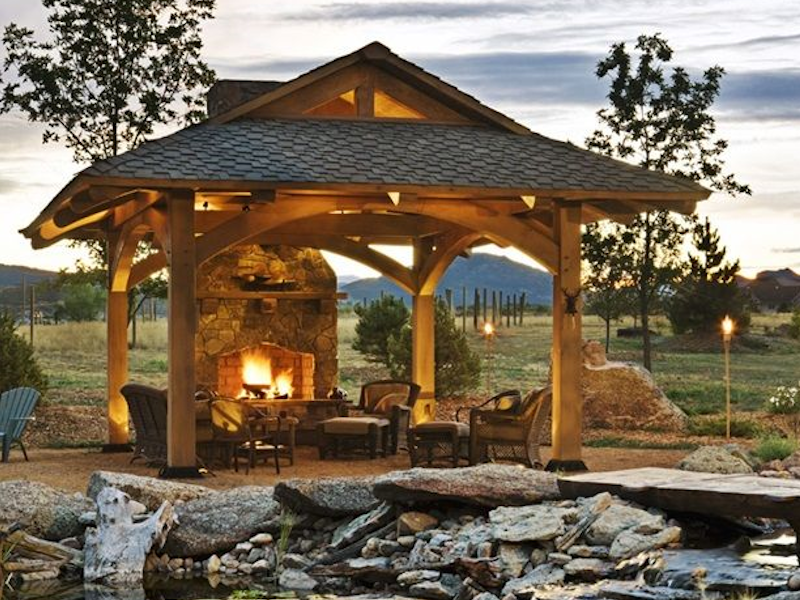
4. Rustic Log Cabin Coziness
Design Elements: Infuse a sense of warmth and coziness with a rustic log cabin-style gazebo. Constructed with natural wood and featuring log pillars, this design provides a cabin-in-the-woods ambiance. A shingled roof completes the rustic look. Enhance the cozy atmosphere with outdoor-friendly, plaid-patterned cushions and blankets.
5. Asian Pagoda Serenity
Design Elements: Create a serene escape with an Asian pagoda-inspired gazebo. Characterized by tiered roofs and minimalistic design, this style evokes a sense of Zen tranquility. Use bamboo or other natural materials for an authentic touch. Consider adding stone pathways and strategically placed lanterns to enhance the meditative atmosphere.
6. Coastal Beach Hut Relaxation
Design Elements: Bring the beach vibes to your backyard with a coastal beach hut-style gazebo. Light-colored wood, open sides, and a thatched roof create a laid-back, tropical feel. This design is perfect for those who want to capture the essence of a seaside retreat. Enhance the coastal aesthetic with comfortable, weather-resistant outdoor furniture in beachy colors.
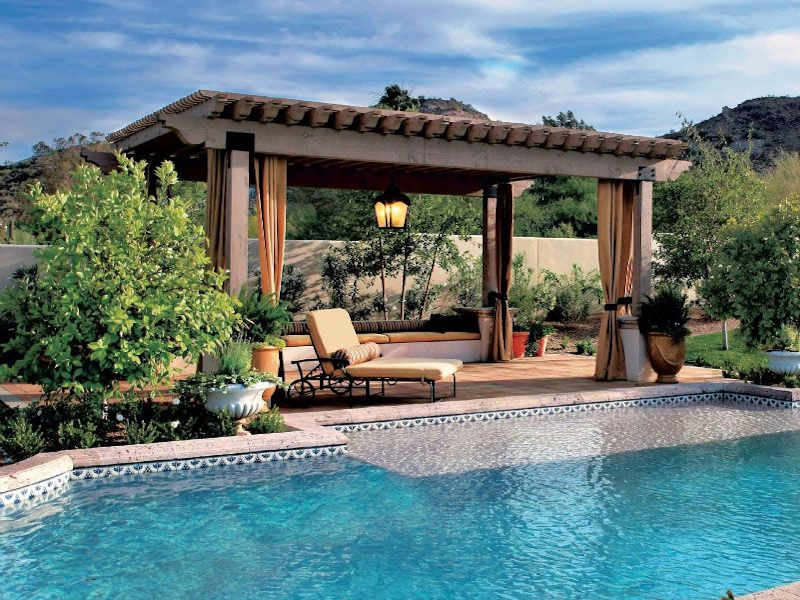
7. Mediterranean Pergola Elegance
Design Elements: Infuse a touch of the Mediterranean with a pergola-style gazebo. Wrought iron details, Mediterranean-style pillars, and an open roof create a breezy and elegant atmosphere. This design is ideal for those who desire a harmonious blend of sophistication and natural beauty. Consider incorporating vibrant Mediterranean plants like bougainvillea for added authenticity.
Conclusion: Building Memories in Your Gazebo Haven
Constructing a gazebo is not just about creating a physical structure; it’s about crafting a space where memories are made, conversations are shared, and the beauty of the outdoors is embraced. Whether you choose a classic octagonal design, a contemporary pavilion style, or something entirely unique, the process of building a gazebo is a journey that adds both value and character to your home. As you embark on this endeavor, let your creativity guide you, and soon you’ll find yourself enjoying the fruits of your labor in the tranquility of your own gazebo haven.
Frequently Asked Questions (FAQs)
1. What is the Best Material for Gazebo Construction?
The choice of material depends on personal preference, budget, and climate. Common materials include wood for a classic look, metal for durability, and vinyl for low maintenance.
2. Do I Need a Building Permit to Construct a Gazebo?
In many areas, a building permit is required for structures like gazebos. Check with your local municipal office to understand the specific regulations and obtain the necessary permits.
3. Can I Install a Gazebo on an Existing Deck or Patio?
It is possible, but the existing structure must be able to support the additional weight of the gazebo. Consult with a structural engineer to ensure safety and compliance.
4. How Can I Extend the Use of My Gazebo in Different Seasons?
Consider adding features like outdoor curtains, space heaters, or a fireplace to make your gazebo more comfortable during cooler months.
5. How Should I Maintain My Gazebo?
Regular maintenance involves inspecting for wear and tear, cleaning surfaces, and reapplying protective finishes like paint or stain as needed. Keep an eye on any signs of damage and address them promptly.
